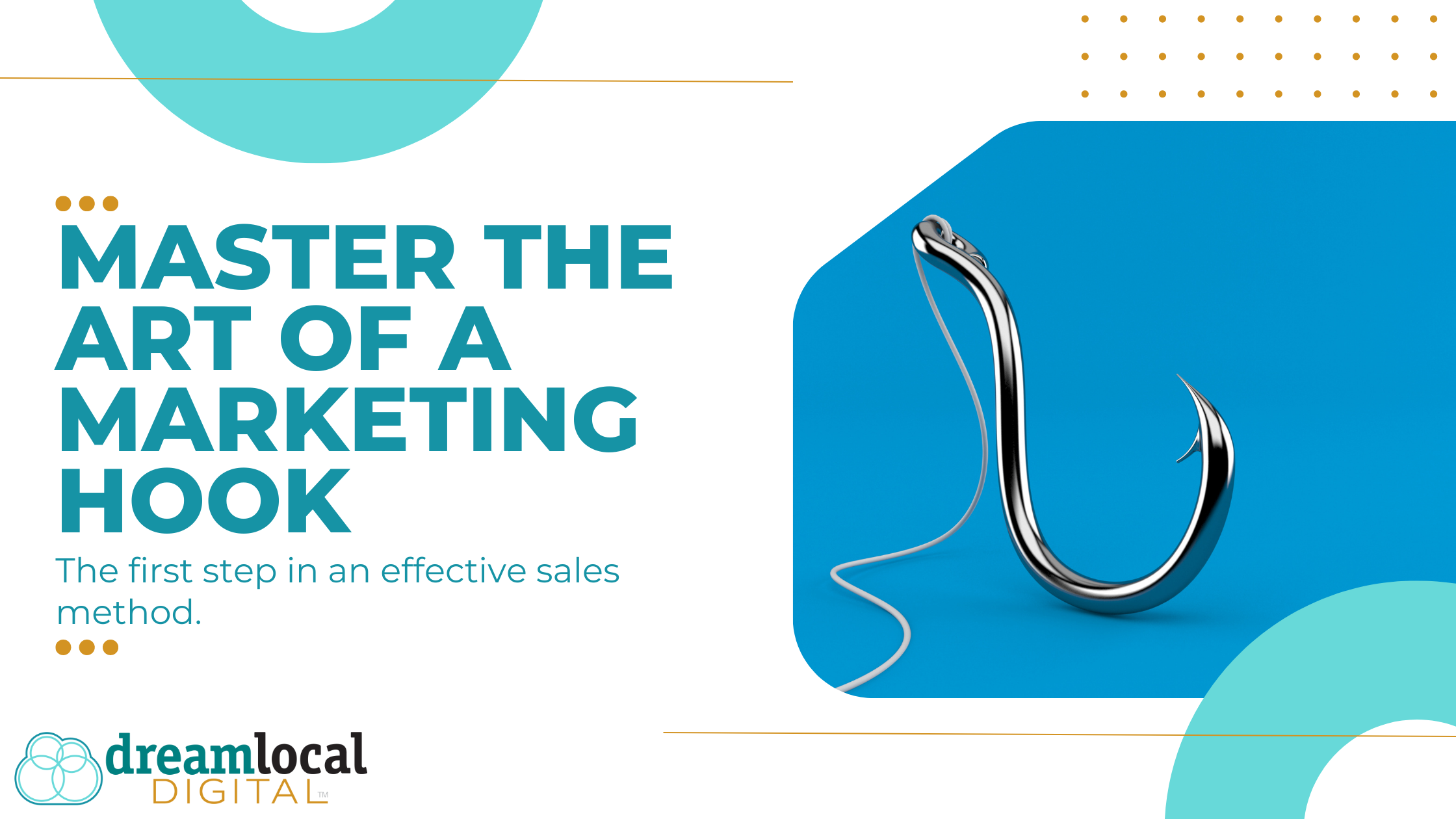
The marketing hooks you use could be the difference between your business sinking or swimming. How so? Your marketing hook is the initial impression you give a potential lead.
Your hook needs to be better than your competitors’ and capture your target customers’ limited attention span. So what if your hook needs some work?
Not a problem. Read on to learn about creating a great sales hook and see some examples. We will briefly touch on Russell Brunson’s “Hook, Story, Offer” strategy. Let’s jump in.
What Is a ˇÁHook?
The “hook” in marketing captures your visitors’ attention. Your hook could be a photo, video thumbnail, headline, or question. Your hook should stop the visitor and cause them to spend more time and attention on your content/messaging.
Common hooks may include:
- Buy now
- Get your free quote now
- Don’t miss out on the latest news
- Book a call with an expert
- Learn more
- Let’s chat
Just like a fishing hook needs bait to catch a fish effectively, your hook needs attractive “bait.” The bait you use depends on your audience and their needs.
Use your hook on blogs, landing pages, ads, email campaigns and more. A compelling hook means more attention, and attention leads to conversions.
How To Come Up With a Hook
Your hook greatly impacts your page performance. A great hook will set your business apart from the rest. So let’s see how you can create your perfect hook!
First, take a look at these rules of thumb for writing your hook:
- Write with active voice versus passive voice. Active voice engages readers.
- Write in the second person. Instead of “Clients want faster solutions to their problems” write “You want faster solutions to your problems.” Connect directly with your target audience. Make it easier for them to fit into the story.
- Focus on the positive. Avoid overwhelming your reader with too much negative information unless it fits a specific context or purpose.
- Refrain from overusing adjectives and adverbs. For example, remove unnecessary words to change “Easily create your content strategy” to “Create your content strategy.” Short and to the point.
Consider these ideas when writing your hook:
- Your audience’s needs. Who are your customers, and what do they want/need? Why do they have those needs? What is the biggest problem or pain point they face?
- Your unique solution. What makes you, your business, or your offer unique? Is it your background and experience, which ensure quality? Is it speed, price, or ROI? Identify what makes you stand out and consider this as a potential hook. Communicate your expertise and value with conviction. Position your business as the antidote to your customers’ problems.
- Objections. What objections do you face? List these and consider countering an objective in your hook. Focus on the most common or critical objection you hear. Common objections from the Fogg Behavioral Model (FBM) include time, money, routine, mental effort and physical effort.
- Poke holes. What are current trends, tips and wisdom in your niche? Can you challenge one of them? Use your knowledge to debunk a common tip in your niche that doesn’t work. How would you challenge the misconception in one sentence? There’s a potential hook!
- History, memories and nostalgia. Consider your background and possibly even your childhood. Can you relate it to your brand or business? What about your target customers’ background or childhood? Are there any patterns? Time travel a bit and look for anything that makes a great story!
Examples of Effective Hooks
Let’s start with some hooks you have probably heard before. They may seem simple, but the hook is highly effective if you recognize it and immediately picture the company, service, or product.
- “Finger Licking Good” … KFC — This hook engages your senses and gives a clear picture to the customer.
- “Just do it” … Nike — This internationally recognized hook gives a sense of motivation, achievement and greatness.
Your hook will look different if you are a small business, e-commerce company or marketer. However, the goal will be the same — to create a quick and clear message in your customers’ minds.
At Dream Local Digital, we recently ran a campaign giving away free Google Business profiles. Instead of leading with just “get your GBP claimed and optimized for free,” we considered our target audience’s pain points, and our hooks included “bring more foot traffic to your store for free” and “increase traffic to your website in 30 days.”
Want to create a campaign that achieves results? Whether it’s attracting more website traffic or increasing your leads, Dream Local Digital will help you reach your goals. Book a free consultation to meet with one of our marketing experts. Get ready to see more customers and improve your marketing ROI.
